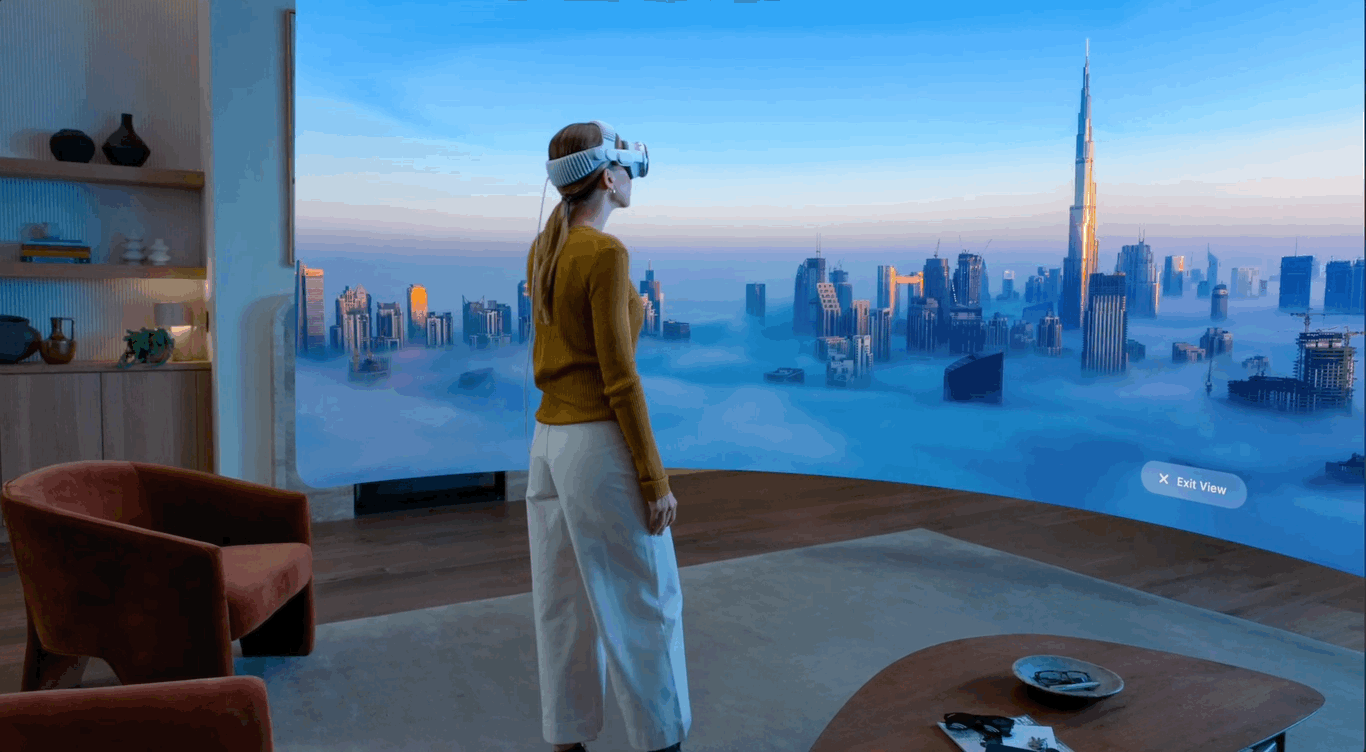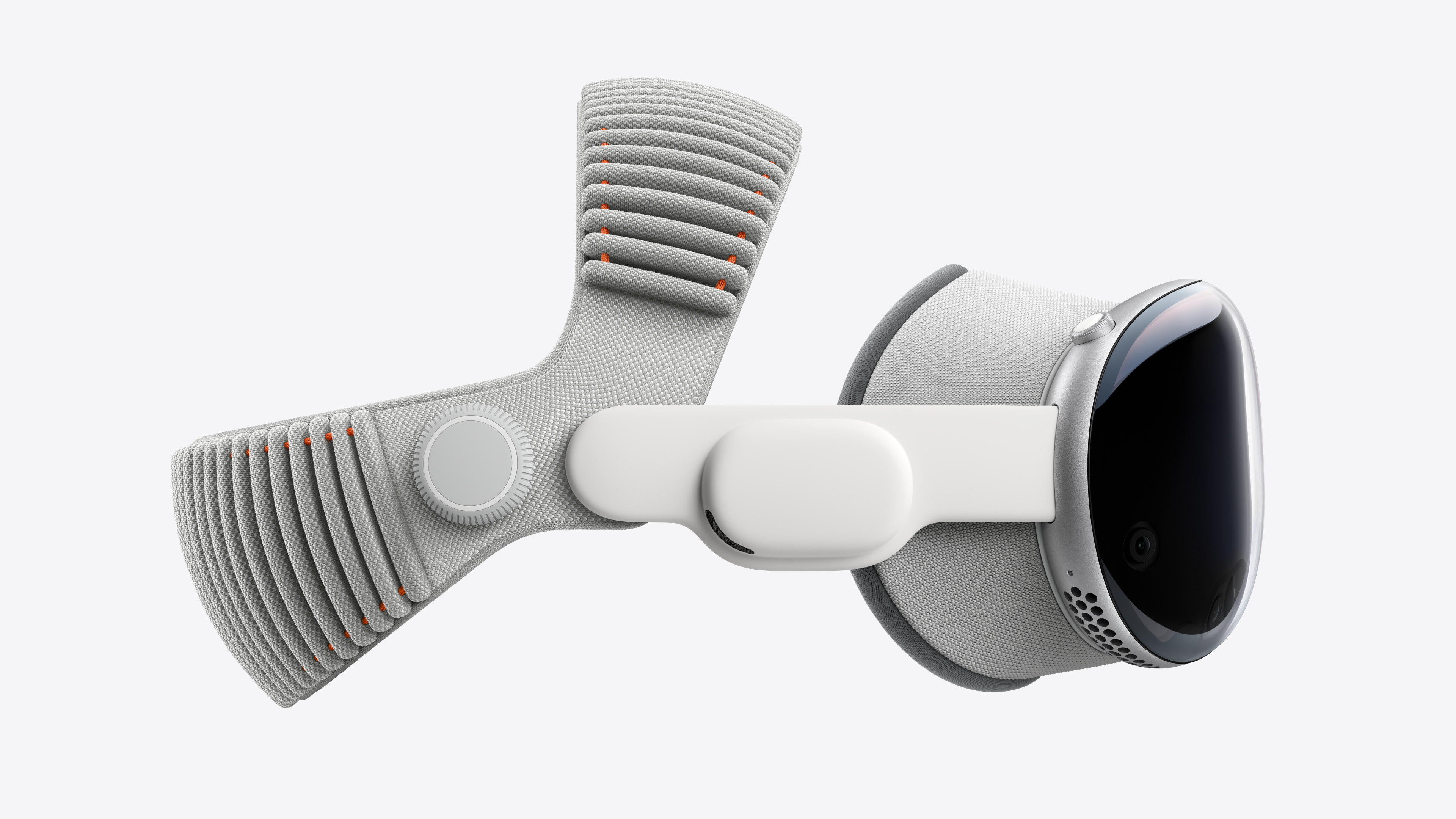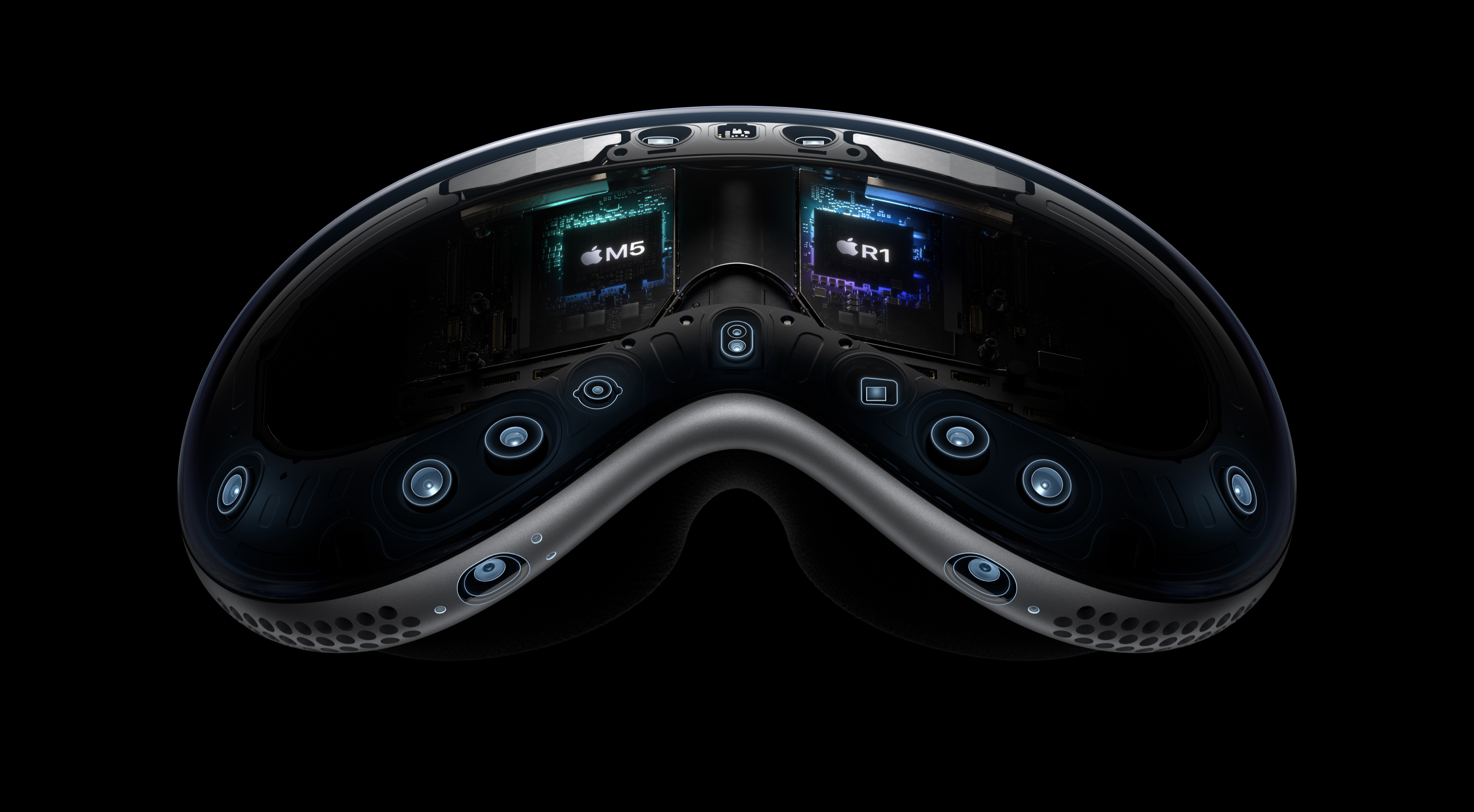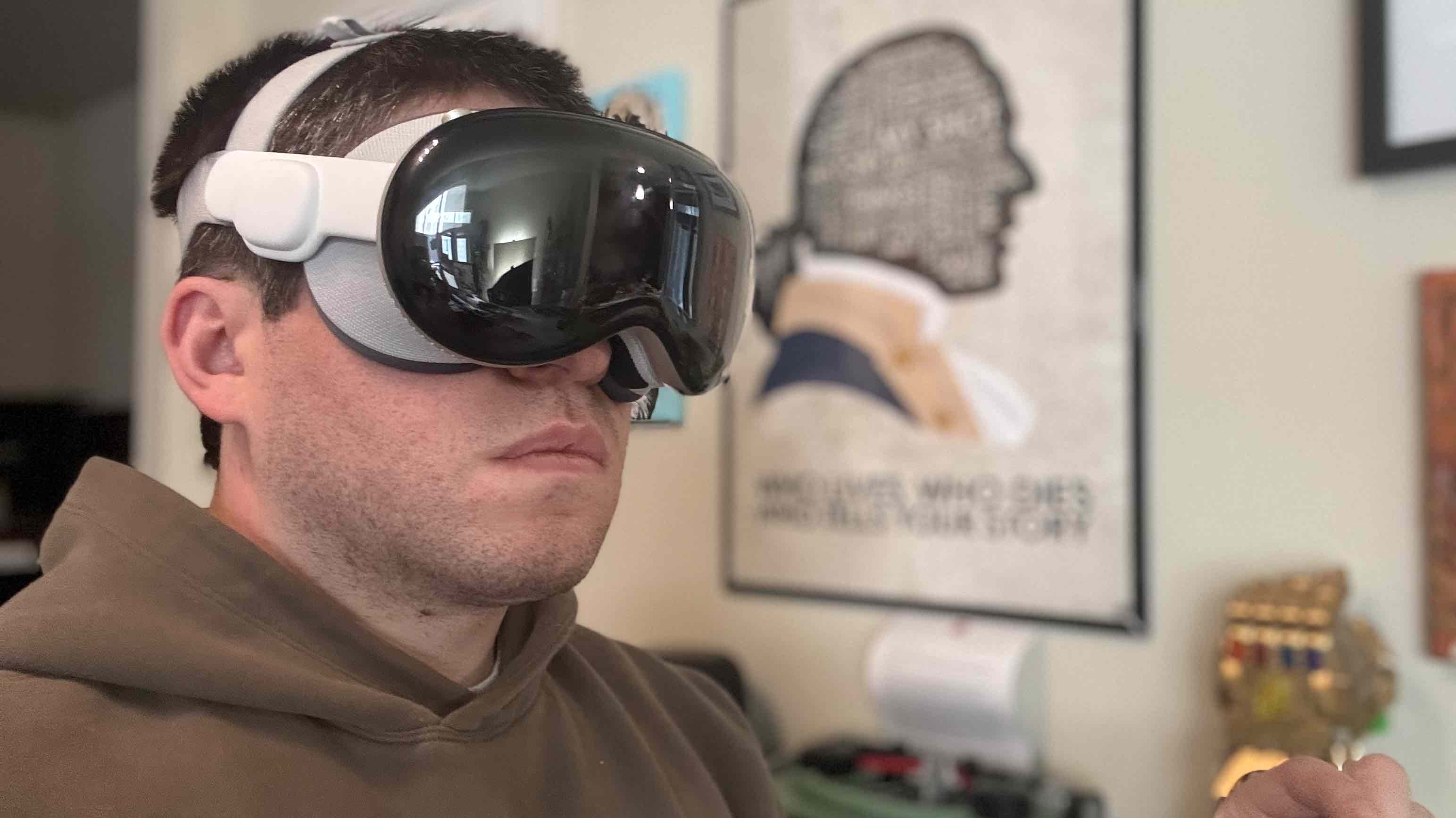Apple just upgraded the Vision Pro with the M5 chip, and a 'Dual Knit Band' that looks way more comfortable

- Apple just upgraded the Vision Pro for the first time
- It's not a redesign, but the M5 chip is now under the hood
- There's also a new Dual Knit Band, which looks a lot more comfortable
While it’s not a redesign, Apple is updating the Vision Pro’s hardware for the first time. The $3,500 Spatial Computer – Apple’s first push into virtual and augmented reality hardware – launched in the United States in February 2024, about 19 months ago, with a whole host of specs, but most critically, an M2 chip under the hood.
The now-aptly-named Apple Vision Pro (M5) swaps the M2 for the brand-new M5 chip with a 10-core CPU and a next-gen 10-core GPU. That will no doubt improve performance in visionOS 26 and across countless apps, but Apple also says it’ll allow the displays to render 10% more pixels and flex up to a 120Hz refresh rate for a clearer view of your surroundings – all when the headset is on, of course.
Apple’s also aiming to improve comfort, and this enhancement can be purchased as an accessory if you’ve already invested in a Vision Pro.
The Cupertino-based tech giant is debuting the 'Dual Knit Band' for the headset, which “delivers an even more comfortable fit for users”, according to Apple. It’s kind of a cross between the two existing Apple-made bands – Solo Knit and Dual Loop – with a strap that goes on top of your head and one on the rear, with the latter featuring a counterweight element that should improve the overall fit.
If you’ve been considering a Vision Pro, the promise of live, immersive NBA games or this M5 upgrade may have now sold you. Apple’s already taking orders for the upgraded headset, and it’ll begin arriving to customers on October 22, 2025. It still starts at $3,499 in the United States, £3,199 in the United Kingdom, and AU$5,999 in Australia. But let’s unpack these changes a bit more.

With the M5 chip under the hood, Apple is calling out improved performance across the board, as well as improvements with AI tasks.
Just like the M5 chip that’s arriving in the iPad Pro M5 or 14-inch M5 MacBook Pro, it’s a 10-core CPU, 10-core GPU, and 16-core Neural Engine all housed on a 3-nanometer chip inside the Vision Pro. That should speed things up in visionOS 26, with Apple specifically noting faster load times for widgets and applications, as well as more responsive web browsing.
Sign up for breaking news, reviews, opinion, top tech deals, and more.
Even more exciting for the potential of games and other new immersive experiences is support for hardware-accelerated ray tracing thanks to the next-generation GPU. As we’ve seen with other devices that offer this, it gives developers and designers more control and levers for more detailed graphics, including much more realistic shadows and lighting in environments.
It will be exciting to see how third parties use this for immersive environments on the Vision Pro, but also for gaming on the platform at large – maybe even if you’re expanding your Mac’s screen with a virtual display. I could also see Marvel expanding on the current What If? immersive experience or debuting new ones.
AI-powered experiences on the Vision Pro, like setting up your Persona – which did get a night-and-day, major improvement with visionOS 26 – and turning photos into Spatial Scenes, will be up to 50% faster with the 16-core Neural Engine. That also leads to up to 2x faster performance for third-party apps.

While the original Vision Pro maxed out at a 100Hz refresh-rate, this upgraded model can reach up to 120Hz for reduced motion blur and clearer visuals when viewing your environment in passthrough or transparency modes.
It’s also a result of the micro-OLED displays now being able to render 10% more pixels. We’ll need to test this to see just how big an improvement it is, though, as passthrough was already leagues ahead of other competing headsets like the Meta Quest 3.
The M5 chip will still work in tandem with the R1 chip, which is not being updated here. It will continue to support the five sensors, six microphones, and twelve cameras to process those feeds and inputs quickly, translating all that within 12 milliseconds to create your view of the world around you.
Apple is improving the battery life, too, to 2.5 hours for daily use and three hours for video playback – that’s a leap of 30 minutes for both. It’s worth noting that there’s no change to the battery pack – it’s still the same, with the same connector to the Vision Pro. And for longer sessions, you’ll need to plug the battery pack into power, which might actually be another battery pack.

So while it’s not a redesign or a more affordable price point, the timing of the upgrade here does make quite a bit of sense.
The M2 chip is aging quite nicely and still delivers fast performance in the current Vision Pro, but an update to the M5 likely lays down a bit more of headroom for the headset and speeds things up, with new competition likely arriving on the horizon. Samsung has set a formal unveiling date of October 21, 2025, for its Project Moohan Android XR headset, which looks quite similar to the Vision Pro.
For folks with a Vision Pro already, or those who’ve been considering it, the Dual Knit Band could solve a particular pain point if you’ve been concerned with comfort. Apple also isn't just limiting that to the M5 version of the Vision Pro; it’s a standard accessory that works with both generations of the headset.
That’s up for order now at $99 in the United States, £99 in the United Kingdom, and AU$169 in Australia. I’m keen to test it out and see what it does for longer stretches with the Vision Pro on.
visionOS 26 brought some pretty major upgrades to the headset, which should speed things up, and more immersive content is on the horizon, including the long-awaited arrival of live sports in the Apple Immersive format. It was recently confirmed that select Los Angeles Lakers NBA games will be broadcast live in Apple Immersive by 2026.
Follow TechRadar on Google News and add us as a preferred source to get our expert news, reviews, and opinion in your feeds. Make sure to click the Follow button!
And of course you can also follow TechRadar on TikTok for news, reviews, unboxings in video form, and get regular updates from us on WhatsApp too.
You might also like

Jacob Krol is the US Managing Editor, News for TechRadar. He’s been writing about technology since he was 14 when he started his own tech blog. Since then Jacob has worked for a plethora of publications including CNN Underscored, TheStreet, Parade, Men’s Journal, Mashable, CNET, and CNBC among others.
He specializes in covering companies like Apple, Samsung, and Google and going hands-on with mobile devices, smart home gadgets, TVs, and wearables. In his spare time, you can find Jacob listening to Bruce Springsteen, building a Lego set, or binge-watching the latest from Disney, Marvel, or Star Wars.
You must confirm your public display name before commenting
Please logout and then login again, you will then be prompted to enter your display name.